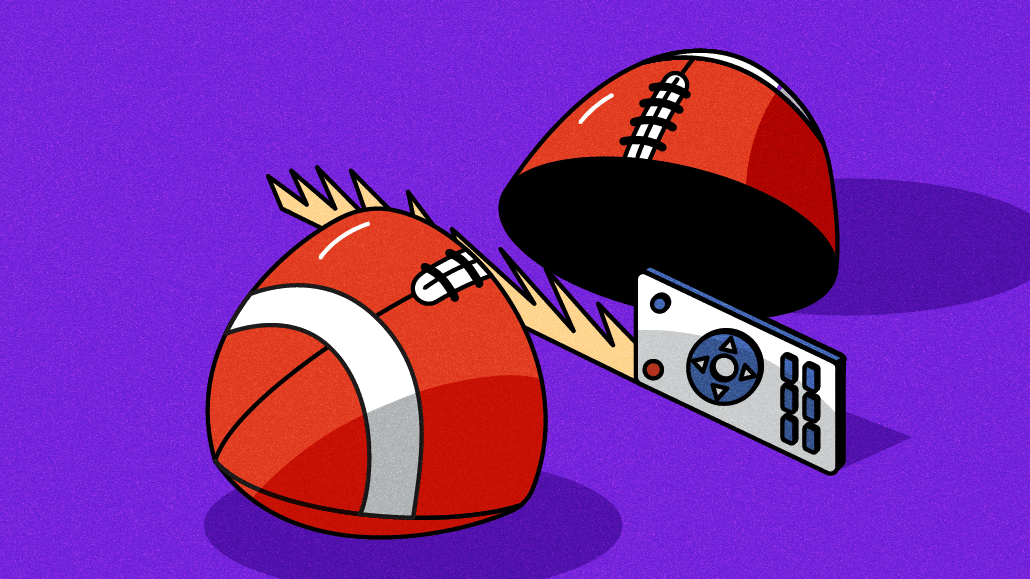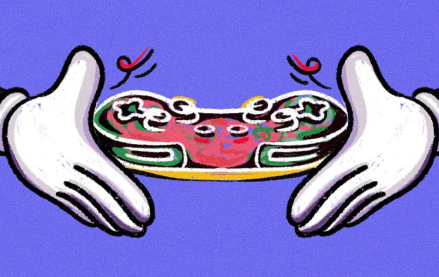By Kimeko McCoy • February 8, 2024 • 5 min read •

Ivy Liu
This story is part of Digiday’s annual coverage of the Super Bowl. More from the series →
There has always seemingly been two Super Bowls for brands to participate in: The game day broadcast with standard (and expensive) 30-second ads, or so-called hacking everything happening around that broadcast, from second screens to experiential events, to build buzz around the Big Game.
With a $7 million dollar price tag for a single, 30-second spot, a hacking strategy is a compelling argument for brands that want to be part of the Super Bowl, while simultaneously cognizant of their ad spend. (Here’s what a $7 million, 30-second Super Bowl ad can purchase in digital media this year.)
For the last five years, Danone has successfully hacked the Big Game with its yogurt brand brand Oikos via digital buys, in-store displays, sweepstakes and other tactics. This year, the company is expanding that playbook to two other brands, Silk and STōK Cold Brew Coffee. (Inside Danone’s Super Bowl hacking strategy here.) Per the company, it’s a strategy that nearly doubled brand sales at one point.
It’s not a new strategy, per se. Skittles skipped the Super Bowl for a Broadway show in 2019, when a spot cost $5.3 million. Back in 2014, Esurance auto insurance company didn’t air during the Big Game when a spot cost $4 million, using a Twitter (now X) hashtag to get Super Bowl users talking about the brand. But as cord-cutting continues to give way to streaming, the ad market gets more crowded and the price tag for a 30-second spot increases, appearing around the Super Bowl instead of in it offers advertisers more bang for their buck.
“Advertising during the Super Bowl might make sense for brands looking to generate buzz at a singular point in time,” Leslie Lee, senior vp of marketing at programmatic digital out-of-home platform Vistar Media, said in an email. “A continual effort can add up to a much bigger impact than a flash-in-the-pan ‘wow’ moment.”
Opendoor real estate company and Jif peanut butter are advertising around the Big Game with digital-first strategies, similar to Danone. Instead of a traditional 30-second broadcast spot, Opendoor will host a livestream during halftime, featuring a real homeowner on its website as well as a local Atlanta station. There is also digital and social with an influencer campaign planned for the campaign.
“This is the first time where we’re deliberately entering the Super Bowl on TV,” said David Corns, CMO at Opendoor. “This is our first Super Bowl spot that we’ve designed for the game.” Last year, for the Super Bowl in Phoenix, the brand did an OOH activation along Phoenix area highways.
Meanwhile, Jif, which is owned by The J.M. Smucker Co., is surrounding the Big Game with influencer partnerships, podcast spots, a partnership with Gopuff delivery app and New York City-area sports bars.
“The importance of being around [the Super Bowl] is the opportunity to really tailor the message and be really culturally relevant on many different platforms,” said Christine Hoffman, senior director of integrated consumer experience at The J.M. Smucker Co. “Our most successful and most efficient advertising is when we draw it through the funnel.”
Costs around the Super Bowl have inched up year-over-year, reaching $7 million for a 30-second broadcast spot this year. Although that price tag mirrors last year’s cost, that figure is up from $6.5 million in 2022, $5.5 million in 2021 and $5.6 million in 2020. Even with approximately 200 million viewers last year, 60% of the U.S. population tuned into what could be the last places everyone is watching at once, but it’s a hard cost to justify for some brands, like Jif.
“Live events are very strong hooks for us to sink our teeth into and we need mass reach,” she said. “But we felt like the gamble of the buzz from one 30-second commercial was too big for us.”
Notably, second screens like streaming ads or vertical video via TikTok, Instagram Reels or even YouTube Shorts, are becoming considerably more popular ad channels in general. Spend on streaming is expected to reach more than $30 billion this year, up from $24.6 billion last year, per Insider Intelligence. With the San Francisco 49ers facing off with the Kansas City Chiefs in Las Vegas for the Big Game this year, on-the-ground activations are also coming into play as marketers use the city’s landmarks to extend efforts. Meaning, advertisers aren’t limited to the traditional broadcast buy and the usual fare on game day. There are more opportunities than ever to get in front of shoppers.
“It opens the door for a lot of brands to be playing on the day that don’t necessarily have the budget or able to buy the media,” said Peter Defries, group creative director at BBH USA creative agency. “I definitely think it’s a more interesting way of activating on the day than just putting a TV spot out.” (BBH USA creative agency led Jif’s Super Bowl campaign.)
Today’s ad marketplace is crowded and the Super Bowl is no exception. To Defries’s point, brands are being tasked with more than a 30-second spot to stand out in a competitive marketplace. To keep people talking about the brand, advertisers are paying full price for a Super Bowl ad and then also hacking the Big Game. For example, in addition to an ad spot in the third quarter of Super bowl LVII, Doritos Dinamita’s first-ever Super Bowl ad comes with in-person activations in Las Vegas.
“The Super Bowl is such a loud moment for brands and such an expensive moment for brands, that if you don’t have the budget to play into it and some official capacity, the odds are that you’re going to be drowned out,” said Veronica Thew, head of strategy at Mother New York creative shop.
Albeit, hacking the Super Bowl can be a more efficient use of ad dollars than a traditional broadcast spot, but it’ll still cost advertisers a pretty penny, Thew said. In some cases, it’s less about saving ad dollars and more about creating a ripple effect around the Big Game to keep a brand top of mind for shoppers.
Thew added, “The Super Bowl is a moment for creativity and part of that creativity isn’t just the advertising, but the media strategy. When your media strategy is as creative as the ad itself, that makes for a much better story.”
https://digiday.com/?p=534129
More in Marketing

Earnings wrap-up: The gaming business is booming — but not necessarily for gaming companies
February 9, 2024 • 5 min read
While tech and entertainment companies are successfully using gaming as a platform to promote their other products and intellectual properties, the actual financial returns of publishing high-quality games are diminishing.

For Doritos Dinamita, a $7 million ad spot is just the start of its Super Bowl strategy
February 9, 2024 • 4 min read
This year’s Super Bowl is in Las Vegas, where the San Francisco 49ers will face off against the Kansas City Chiefs. Given the setting, Doritos Dinamita chip brand is rolling out all the stops, including a celebrity-packed in-game spot, digital activations and in-person activities.

‘An awareness problem’: Why beauty brands like E.l.f Beauty, NYX, CeraVe are advertising at Super Bowl LVIII
February 9, 2024 • 5 min read
The Super Bowl remains one of the few monoculture events with a mass audience; last year’s game scored a record 115 million viewers.
